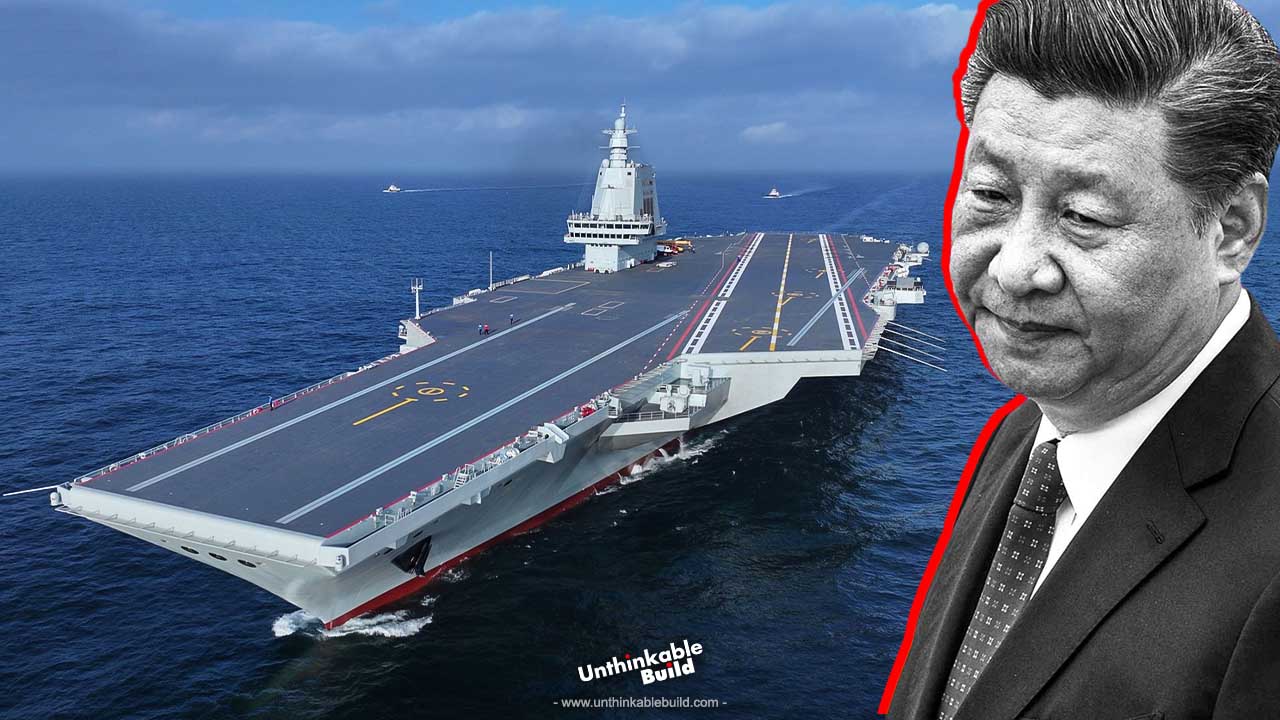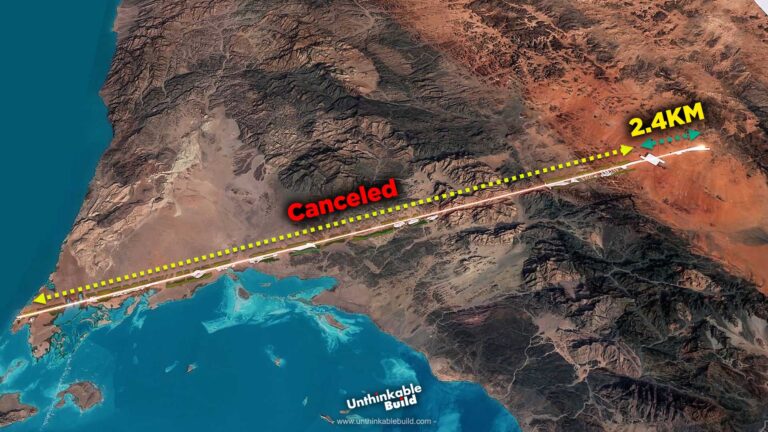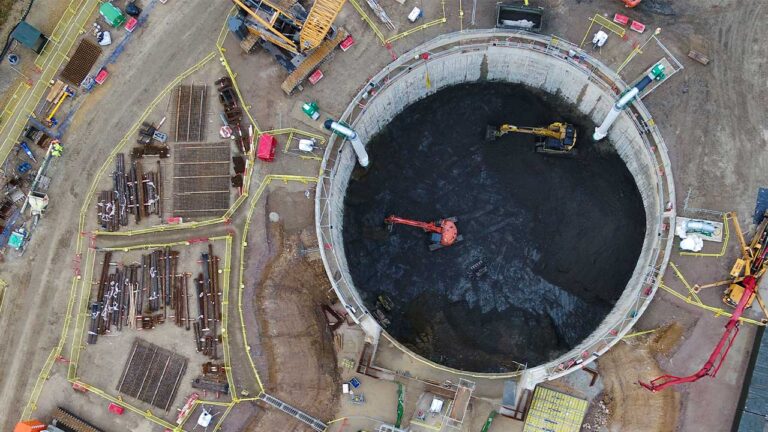Can China’s New Giant Aircraft Carrier Fujian Really Dominate the Seas?
China is going full throttle in its quest for growth, making strides in nearly every sector. The country is clearly establishing a pace in the global arena. Yet, when it comes to tactical equipment, China often looks across the Pacific, taking cues from the US technology.
This is China’s newest addition to its naval fleet, the Fujian aircraft carrier. It’s a massive vessel that’s designed with striking similarities to the USS Gerald R. Ford, a marvel of American engineering. The Fujian isn’t just about showcasing China’s growing naval ambitions; it reveals an intentional strategy to blend the best of global technologies.
Even though the Fujian Aircraft Carrier looks strikingly similar to the USS Gerald R. Ford, and China has gone all out to copy every detail of the American carrier, there’s a significant factor that could make a huge impact if the two countries ever found themselves at odds.
The U.S. and China both have interesting chronicles of their first aircraft carriers development, but their journeys are worlds apart. The U.S. has been perfecting aircraft carriers for over a century, beginning with the USS Langley. Launched in August 1912 and converted from the collier USS Jupiter in 1920, initially comprised of a wooden deck, it became the US Navy’s first aircraft carrier and also its first turbo-electric-powered ship. This was a big leap forward in naval technology at the time.
Also Read: 1000M: Chicago’s Luxurious Mega Skyscraper
China’s, on the other hand, took a different path. Its first aircraft carrier, the Liaoning, has quite a unique backstory. Originally built for the Soviet Navy, it began life as the Kuznetsov-class carrier “Riga” and was launched in 1988. After the fall of the Soviet Union, the ship that was left unfinished, renamed as “Varyag”. In 1998, China stepped in and it took more than a decade of extensive refitting and modifications. In 2012, the ship was finally commissioned into the People’s Liberation Army Navy as the Liaoning.
The Liaoning initially served as a training vessel, since China had no prior experience owning or operating an aircraft carrier. It provided a crucial opportunity for Chinese forces to learn the ropes of carrier operations. However, with continuous upgrades and enhancements over the time, Liaoning has transformed into a combat-ready ship capable of playing an active role in PLA’s naval forces.
After taking its first major step into aircraft carrier operations with the Liaoning, China moved forward by developing its second carrier, the CNS Shandong. Launched on April 26, 2017, and officially entering service with the PLA Navy on December 17, 2019, the Shandong was the first aircraft carrier built entirely in China, unlike the Liaoning.
The Shandong has a larger air wing, more advanced radar systems, and employs a Short Take-Off But Arrested Recovery (STOBAR) system, enhancing its effectiveness in a variety of operations.
However, these Chinese Aircraft Carriers don’t quite measure up to the more than 70 modern aircraft and cutting-edge 21st-century tech that you’ll find on U.S. carriers like USS Gerald R. Ford. It was only when China announced the Fujian in 2018 that the U.S. really started to take notice and worry about the increasing strength of China’s naval forces.
The Fujian, China’s third aircraft carrier and the first of Type 003 class, is making waves in naval innovation. Launched on June 17, 2022, and began its sea trials in May 2024, this carrier is a big deal for China. It’s the country’s first fully in-house designed carrier. One of the most impressive features of the Fujian is its CATOBAR system, which includes cutting-edge electromagnetic catapults. This means, when a jet takes off from the carrier, it uses its own power but gets a helpful boost from a ski jump to get into the air. When it comes back, it lands using a traditional arresting system.
The U.S. Navy has preferred using catapults on carriers for launching aircraft for generations. Each jet is launched with the help of a powerful steam-driven catapult, powered by either the carrier’s nuclear reactor or its boilers. This system can handle heavier aircrafts because the catapult does most of the hard work in getting them off the deck.
When we compare the USS Gerald R. Ford with China’s Fujian aircraft carrier, we see how each carrier reflects the advancements and priorities of its respective navy.
The USS Gerald R. Ford, about 337 meters long and displacing around 100,000 tons, is notably larger than the Fujian, which roughly stretches 316 meters and displaces between 80,000 – 85,000 tons. Weight of the aircraft carrier makes a big difference as the heavier Gerald R. Ford will sit lower in the water. This stance gives it a more stable center of gravity compared to the Fujian. Hence, the Ford can handle more aggressive maneuvers and tilt more effectively, giving it an edge in navigation and performance at sea.
In terms of aircraft capacity, the Gerald R. Ford has impressive capability of carrying over 75 aircraft and potentially up to 90. China’s Fujian, meanwhile, is designed to carry a mix of 44 fighter jets like the Shenyang J-15 along with 12 helicopters designed for multiple missions.
Both carriers use the Electromagnetic Aircraft Launch System (EMALS) to get fighter jets off the deck, but the USS Gerald R. Ford has four catapults compared to the Fujian’s three. The Ford also has three aircraft elevators, whereas the Fujian has two.
One of the major differences is in their power sources. The USS Gerald R. Ford is nuclear-powered and can stay out at sea for extended periods without needing to refuel up to 40 years. The Fujian Aircraft Carrier, being conventionally powered, might not have the same operational range.
In terms of technology, the Gerald R. Ford utilizes next-generation radar systems, upgraded weapons elevators, and high-tech automation that helps reduce crew size. The Fujian does include sophisticated radar and sensor systems and has more automation compared to its earlier carriers, but it’s still catching up in some areas.
When it comes to their roles, the USS Gerald R. Ford is built for global strategic influence, supporting a wide range of military missions. In contrast, the Fujian boosts China’s ability to project power over greater distances, focusing on regional influence and extended operational reach.
Also Read: The Hidden Tunnels Under the White House: Fact or Fiction?
When comparing the weapon systems of the Ford and the Fujian, several key aspects come into focus. The USS Gerald R. Ford is equipped with a robust armament system that features three Phalanx Close-In Weapon Systems (CIWS) designed to defend against incoming missiles and aircraft. It also has four Mk 38 25mm machine gun systems and multiple M2 .50-caliber machine guns, for close-range defense.
The Fujian, on the other hand, is also well-equipped but with some differences. Though specific details are less documented, its armament likely includes similar close-in weapon systems for defense. The Fujian is expected to have advanced anti-aircraft missile systems to protect against aerial threats.
Both aircraft carriers represent the height of their respective navies’ technological advancements. While the Ford has a slight edge in power source and aircraft capacity, the Fujian showcases advanced catapult technology and reflects China’s growing naval capabilities.
The key differences between the two aircraft carriers lie in their operational range and technological development. U.S. aircraft carriers benefit from nuclear power, giving them an edge in range and endurance, along with decades of operational experience that contribute to their excellence and sophistication.
While China is making impressive strides in aircraft carrier technology and expanding its fleet, the U.S. still holds a significant lead in experience, technology, and operational capability.







